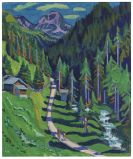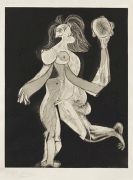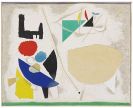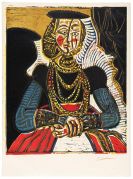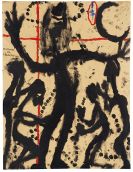
Abram Games
London
1914 -
London
1996
Abram Games, whose real name was Abraham Gamse, was born in Whitechapel, London, in 1914. His father, Joseph Gamse, a Latvian photographer, changed the family name to Games. For a while Abram Games attended St Martins School of Art in London but, disillusioned by the style of teaching and deterred by the high tuition fees, Abram Games soon left the art school. From 1932 until 1936, Abram Games worked as a "studio boy" at the London commercial design firm Askew-Young and was a photographer's assistant to his father.
In 1935 Abram Games submitted a poster of his own design to a poster competition held by the London City Council and won. From 1936 Abram Games freelanced as a graphic designer, creating posters for London Transport and Shell.
Through contact to Jack Beddington, design director at Shell, Abram Games became official poster artist to the British War Office during the second world war. For the War Office, Abram Games designed about a hundred propaganda posters. Working on those posters was what made Abram Games develop a distinctive style with which he succeeded in making a maximum statement with a minimum of means ("maximum meaning, minimum means"). The best known Abram Games wartime posters are those he did for the ATS (Auxiliary Territorial Service), which appealed to women to join the war effort on the home front. After the war, Abram Games again freelanced as a graphic artist, designing posters, advertisements, and logos for "The Financial Times", the BBC, British Airways, Guiness, London Transport, Shell, the United Nations, and El Al airline.
Abram Games also designed book covers for Penguin Books and, in 1951, the Festival of Britain emblem. Abram Games was one of the last designers of lithograph posters before this craft was replaced by the offset process.
Would you like to sell a work by Abram Games?
Infos for seller
